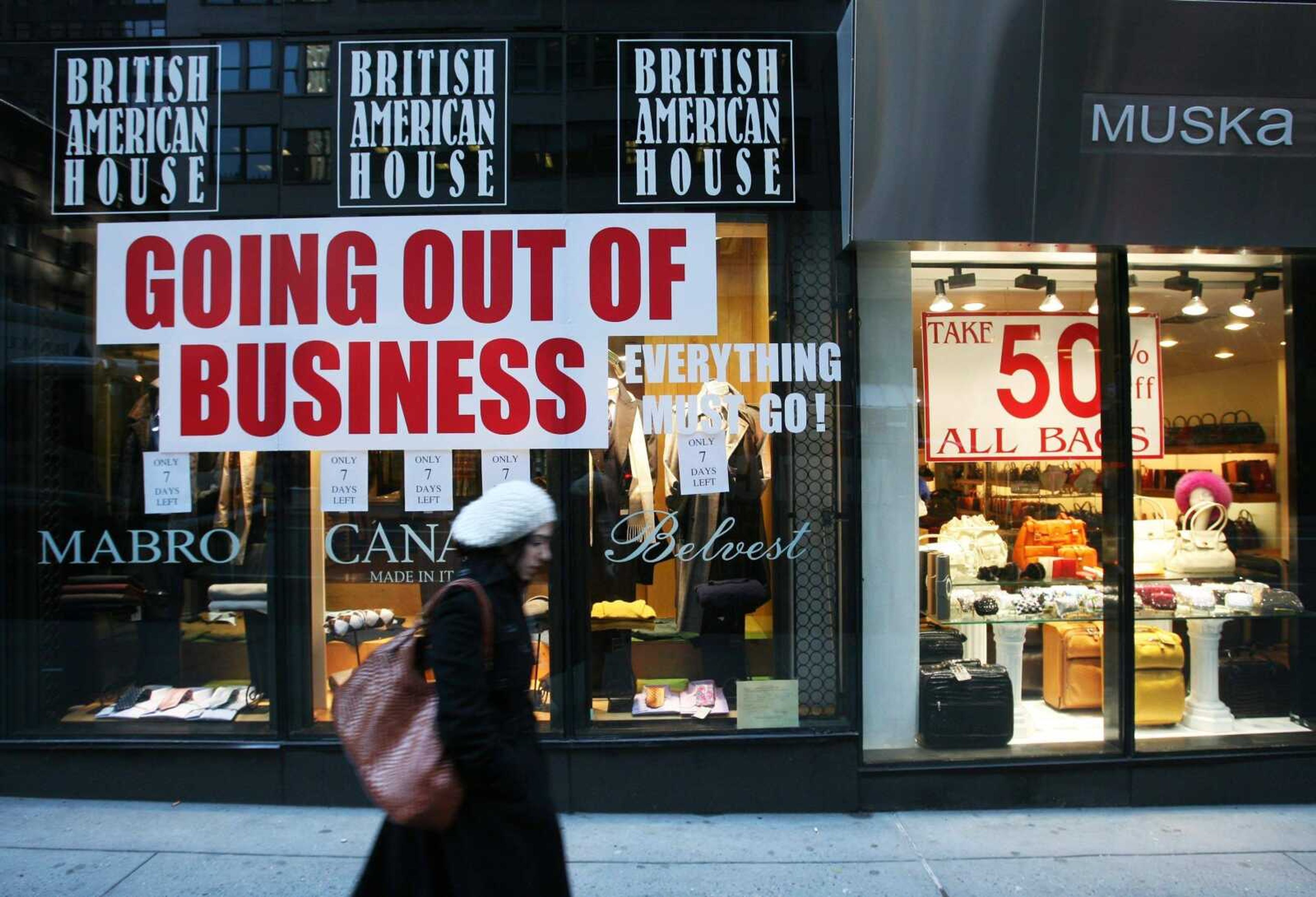More sour economic reports for employment and retail
WASHINGTON -- More people sought unemployment benefits than expected last week and laid-off workers found it harder to land new jobs as the economy struggled to show signs of life. Sour economic indicators Thursday also plagued the retail industry: Weak factory orders were reported for December and sales declines last month for many major stores raised concerns about the industry's health...
WASHINGTON -- More people sought unemployment benefits than expected last week and laid-off workers found it harder to land new jobs as the economy struggled to show signs of life.
Sour economic indicators Thursday also plagued the retail industry: Weak factory orders were reported for December and sales declines last month for many major stores raised concerns about the industry's health.
Productivity rose sharply in the final months of the year, the government said -- but only because layoffs cut the number of hours worked more than output fell.
"Business owners have gone into lockdown mode in what is turning out to be the worst economic environment since the early 1980s," said Tim Quinlan, economic analyst at Wachovia.
The news isn't expected to improve soon. Today the government releases employment figures for January, and economists predict it will report of net loss of 524,000 jobs.
They also expect to learn the unemployment rate rose to 7.5 percent last month, to a 17-year high, up from 7.2 percent in December, according to a survey by Thomson Reuters.
In its report Thursday on jobless claims, the Labor Department said the number of newly unemployed workers seeking benefits surged to a seasonally adjusted 626,000 last week, from the previous week's figure of 591,000.
The new level is the highest since October 1982, when the economy was in a steep recession, though the work force has grown by about half since then. A year ago, unemployment claims stood at 351,000.
More job cuts were announced Thursday -- cosmetics maker Estee Lauder Cos. said it plans to cut 2,000 staffers, or 6 percent of its work force, and extend a hiring freeze. Women's clothing retailer Talbots Inc. announced 370 job cuts as part of a new $150 million cost-cutting program.
Laid-off workers are finding it harder to land new jobs as companies impose hiring freezes on top of job reductions.
The number of people remaining on the unemployment compensation rolls rose slightly to nearly 4.8 million, the Labor Department said. That figure was the most since records began in 1967. The figures on continuing jobless claims lag behind the number of new claims by one week.
Other new reports contributed to a dark portrait of the economy, which has been in recession for more than a year.
Factory orders fell by 3.9 percent in December, the Commerce Department said, a record fifth straight drop that was steeper than analysts expected. For all of 2008, orders for everything from autos to computers to food rose by only 0.4 percent. That was the weakest showing since orders fell 1.8 percent in 2002.
Meanwhile, January retail sales fell by 1.6 percent, according to the International Council of Shopping Centers-Goldman Sachs tally. That wasn't as bad as the 2 to 3 percent drop expected, but it was the fourth consecutive monthly decline.
Retailers ranging from department stores to teen clothing chains reported anemic sales, with the exception of Wal-Mart Stores Inc., which posted a 2.1 percent gain.
President Barack Obama referred to the bleak economic reports in remarks urging Congress to approve a stimulus bill that could cost as much as $900 billion.
"The time for talk is over," Obama said. "The time for action is now."
Senate moderates from both parties are working to trim the cost of the package by as much as $100 billion. Democratic leaders are hoping the bill could be approved in the Senate as soon as Friday.
Wall Street reversed early losses and ended the day higher. The Dow Jones industrial average added more than 106 points, and broader stock indicators also rose.
The housing slump and financial crisis have slashed spending by businesses and consumers. Those cutbacks have sent the economy into a downturn that is expected to continue until at least the second half of this year.
Companies are increasingly laying off workers to reduce costs. So far this week, the companies announcing job cuts included: Botox maker Allergan Inc., Time Warner Cable, PNC Financial Services Group, Liz Claiborne Inc., and aerospace company Rockwell Collins Inc.
The slew of layoffs have resulted in a jump in productivity, or the amount of output per hour worked, a separate report on Thursday showed.
The Commerce Department said productivity rose at an annual rate of 3.2 percent in the final three months of last year, far above the 1.1 percent rise that economists had expected. Labor costs edged up at a 1.8 percent annual rate in the fourth quarter, far lower than the 2.9 percent rise that had been forecast, the department said.
Higher productivity typically stems from greater use of technology or other innovations and is key to long-term economic growth. But this time, the jump occurred because rising layoffs caused the number of total hours worked in the fourth quarter to plunge faster than output declined.
"The good news is that rising productivity and low labor cost increases means firms are controlling expenses, so they can ride out the economic storm," said Joel Naroff, chief economist at Naroff Economic Advisors. "The bad news is ... they are doing it by dramatically cutting payrolls."
As a proportion of the work force, the nearly 4.8 million people receiving unemployment benefits is at the highest level since August 1982. But the total doesn't even include an additional 1.7 million people who are receiving unemployment insurance through an extension of benefits Congress approved last year. If those people are included, the total number receiving jobless benefits is about 6.5 million.
------
Associated Press writers Martin Crutsinger and David Espo in Washington and Anne D'Innocenzio in New York contributed to this report.
Connect with the Southeast Missourian Newsroom:
For corrections to this story or other insights for the editor, click here. To submit a letter to the editor, click here. To learn about the Southeast Missourian’s AI Policy, click here.






